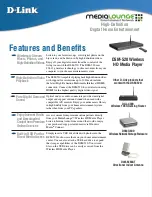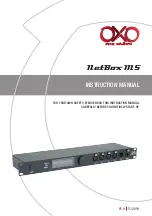
Digital
: Sound that has been converted into numerical values. Digital sound is available when
you use the DIGITAL AUDIO OUT COAXIAL or OPTICAL jacks. These jacks send audio through
multiple channels, instead of just two channels as analog does.
PCM (Pulse Code Modulation)
: A system for converting analog sound signal to digital signal
for later processing, with no data compression used in conversion.
S/PDIF
- Format for carrying audio digitally over either optical (TOSLINK) or electrical
(Coaxial) cable. Can carry high quality DTS or Dolby Digital audio.
TOSLINK
- Standardised optical fibre connection system invented by Toshiba. Typically used
to connect the Player to a AV receiver for passthrough of HiFi audio. In our site, when we refer
to digital optical we mean S/PDIF via TOSLINK.
ISH
Dolby Digital (or AC-3)
- It isa surround sound system developed by Dolby Laboratories
containing up to six channels of digital audio (front left and right, surround left and right,
center and subwoofer). It is a required standard of both Blu-Ray and DVD and the most widely
supported. It is a ‘lossy’ format so is of a lesser quality than the studio original. Surround
sound up to 5.1 channel is supported. The Dolby Digital audio track can either be decoded
(downmixed) to stereo in the Player or digitally bitstreamed direct (passthrough) to a
compatible AV receiver (via TOSLINK/Coaxial/HDMI) for decoding.
Dolby Digital Plus (or E-AC3)
- is an enhanced version of Dolby Digital offering higher bit-
rates and the possibility for 7.1 surround sound. Although better quality than Dolby Digital, it
is still a ‘lossy’ format. Dolby Digital Plus is little used and has largely been passed over in
favour of higher quality lossless formats.
DTS (Digital Theater System)
- is a required standard of both Blu-Ray and DVD players and
is widely regarded to produce audio quality superior to Dolby Digital. Up to 5.1 channel
surround sound is supported. DTS is a ‘lossy’ compression standard so the audio is of a lesser
quality than the original studio recording. The DTS audio track can either be decoded
(downmixed) in the Player to stereo or digitally bitstreamed direct (passthrough) to a
compatible receiver (via TOSLINK/Coaxial/HDMI) for decoding.
DTS-HD MA (Master Audio)
- is a lossless compression format giving audio identical to the
original studio recording. It supports up to 8 channels for surround sound. Unlike Dolby
TrueHD, DTS-HD MA works in a core+extension configuration so players that do not support it
can extract the DTS core audio. DTS-HD MA can either be downmixed to an analogue format if
supported by the player, or bitsreamed via HDMI 1.3 to a compatible AV receiver. TOSLINK or
Coaxial S/PDIF cannot carry a DTS-HD MA signal because the S/PDIF standard was finalised
long before lossless HD-Audio was envisaged. HDMI 1.3 or higher is therefore the only way to
pass Dolby TrueHD audio.
LAN (Local Area Network)
- A computer network covering a small area, typically a home or
a small office. Connections are typically by Ethernet cable or Wi-Fi.
Universal Plug and Play (UPnP)
is a set of networking protocols. The goals of UPnP are to
allow devices to connect seamlessly and to simplify the implementation of networks in the
home (data sharing, communications, and entertainment). UPnP achieves this by defining and
publishing UPnP device control protocols (DCP) built upon open, Internetbased communication
standards. UPnP AV stands for UPnP Audio and Video. The UPnP AV standards have been
referenced in specifications published by other organizations including Digital Living Network
Alliance Networked (DLNA) Device Interoperability Guidelines, International Electrotechnical
Commission IEC 62481-1, and Cable Television Laboratories OpenCable Home Networking
Protocol.
44


































